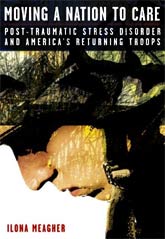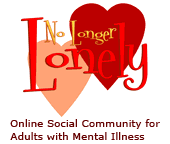LinkBlog
[USA] Think Social Networks, Blogs Can’t Hurt You? Health insurers can use your on-line posts to avoid paying for treatment
Debunking the 'Chemical Imbalance' myth (pdf)
The Johns Hopkins Guide to Antidepressants (Note: requires registration of a valid email address)
Not Depressed, Just British!
The role of stress in just about everything — part 1/3
by Eric Wargo
Association for Psychological Science

Stress, to put it bluntly, is bad for you. It can kill you, in fact. A study now reveals that stress causes deterioration in everything from your gums to your heart and can make you more susceptible to everything from the common cold to cancer. Thanks to new research crossing the disciplines of psychology, medicine, neuroscience, and genetics, the mechanisms underlying the connection are rapidly becoming understood.
The first clues to the link between stress and health were provided in the 1930s by Hans Selye, the first scientist to apply the word "stress"- then simply an engineering term- to the strains experienced by living organisms in their struggles to adapt and cope with changing environments.
One of Selye's major discoveries was that the stress hormone cortisol had a long-term effect on the health of rats.
Cortisol has been considered one of the main culprits in the stress-illness connection, although it plays a necessary role in helping us cope with threats. When an animal perceives danger, a system kicks into gear: A chain reaction of signals releases various hormones - most notably adrenaline (epinephrine), noradrenaline (norepinephrine), and cortisol - from the adrenal glands above each kidney.
These hormones boost heart rate, increase respiration, and increase the availability of glucose (cellular fuel) in the blood, thereby enabling the famous "fight or flight" reaction.
Because these responses take a lot of energy, cortisol simultaneously triggers other energy intensive physical processes - including digestion, reproduction, physical growth, and some aspects of the immune system - to shut or slow down.
When occasions to fight or flee are infrequent and threats pass quickly, the body's stress thermostat adjusts accordingly: Cortisol levels return to baseline (it takes 40-60 minutes), the intestines resume digesting food, the sex organs kick back into gear, and the immune system resumes fighting infections.
But problems occur when stresses don't let up, or when, for various reasons, the brain continually perceives stress even if it isn't really there.
Stress begins with the perception of danger by the brain, and it appears that continued stress can actually bias the brain to perceive more danger by altering brain structures such as those which govern the perception of and response to threat. Prolonged exposure to cortisol inhibits the growth of new neurons, and can cause increased growth of the amygdala, the portion of the brain that controls fear and other emotional responses.
The end result is heightened expectation of and attention to threats in the environment. Stress hormones also inhibit neuron growth in parts of the hippocampus, a brain area essential in forming new memories. In this way, stress results in memory impairments and impairs the brain's ability to put emotional memories in context.
Think of it this way: Too much stress and you forget not to be stressed out.
These brain changes are thought by some researchers to be at the heart of the link between stress and depression - one of stress's most devastating health consequences - as well as posttraumatic stress disorder (PTSD).
Although when we think of stressors we might think of big things like abuse, illness, divorce, grieving, or getting fired, it is now known that the little things - traffic, workplace politics, noisy neighbors, a long line at the bank - can add up and have a similar impact on our well-being and our health.
People who report more minor irritants in their lives also have more mental and physical health problems than those who encounter fewer hassles. And recent research shows that PTSD may be the result of stressors adding up like building blocks, remodeling the plastic brain in a cumulative rather than a once-and-for-all fashion.
But the best known of stress's health impacts are on the heart.
The idea that stress directly causes coronary heart disease has been around since the 1950s; although once controversial, the direct stress-cardiac link is now well-documented by many studies. For instance, men who faced chronic stresses at work or at home ran a 30 percent higher likelihood of dying over the course of a nine-year study; in another study, individuals reporting neglect, abuse, or other stressors in childhood were over three times as likely as nonstressed individuals to develop heart disease in adulthood.
Adding insult to injury, stress may even have a self perpetuating effect. Depression and heart disease, for example, are not only the results of stress, but also causes of (more) stress. Consequently, the chronically stressed body can appear less like a thermostat than like a wailing speaker placed too close to a microphone - a feedback loop in which the stress response goes out of control, hastening physical decline with age.
Growing evidence shows that our sensitivity to stress as adults is already "tuned," so to speak, in infancy. Specifically, the amount of stress encountered in early life sensitizes an organism to a certain level of adversity; high levels of early life stress may result in hypersensitivity to stress later, as well as to adult depression.
A history of various stressors such as abuse and neglect in early life are a common feature of those with chronic depression in adulthood, for example.
At McGill University in Montreal, Michael J. Meaney and his colleagues have studied mother and infant rats, using rat maternal behavior as a model of early life stress and its later ramifications in humans. The key variable in the world of rat nurturance is licking and grooming. Offspring of rat mothers who naturally lick and groom their pups a lot are less easily startled as adults and show less fear of novel or threatening situations - in other words, less sensitivity to stress - than offspring of less nurturant mothers.
The same thing is true of offspring of naturally less nurturant mothers who are raised (or "cross-fostered") by more nurturant ones. By the same token, low-licking-and-grooming rat mothers are themselves more fearful than the more nurturant rat moms; but again, female offspring of those non-nurturant mothers foster-parented by nurturant mothers show less fear and are themselves more nurturant when they have pups of their own.
This indicates that the connection between maternal nurturance and stress responsiveness is not simply genetic, but that fearfulness and nurturance are transmitted from generation to generation through maternal behavior.
The vicious cycle of stress hormones biasing us to perceive more threat and react with an increased stress response might seem like some kind perverse joke played by nature - or at least a serious design flaw in the brain. But it makes better sense if we take the brain out of its modern, urban, "civilized" context.
The stress response is a necessary response to danger.
For animals, including most likely our hominid ancestors, behavioral transmission of individual differences in stress reactivity from parents to offspring makes sense as an adaptation to fluctuating levels of danger in the environment.
Animals raised in chronically adverse conditions (e.g., high conflict, material deprivation) may expect more of the same in the near future; so in effect, the maternal treatment of offspring attunes them to the level of stress they may expect to encounter in their lives. As such, a response that seems baffling and counterproductive in a modern, civilized context may make more sense in the context of our distant evolutionary past.
Even depression has been theorized as playing an adaptive role in certain contexts.
The inactivity, lack of motivation, loss of interest in pleasurable activities like sex, and withdrawal from social relationships experienced by depressed people closely resemble "sickness behavior" - the energy-saving lethargy activated by the immune system in response to infection.
In a natural setting, the hopeless attitude of depression may be the most adaptive for an organism infected with a pathogen: The best strategy for survival is not to expend energy fruitlessly and become exposed to predators, but to hunker down, hide from threats, and direct energy to immune processes where it's needed.
And it turns out that baboons suffer from depression and other stress-related disorders, just like people do. According to Stanford neuroendocrinologist Robert Sapolsky, who has studied stress in baboon troops, it is the relative safety from predators and high amounts of leisure time enjoyed by some primates - including humans - that has transformed these useful biological coping mechanisms into a source of pointless suffering and illness.
part 2 | part 3
















